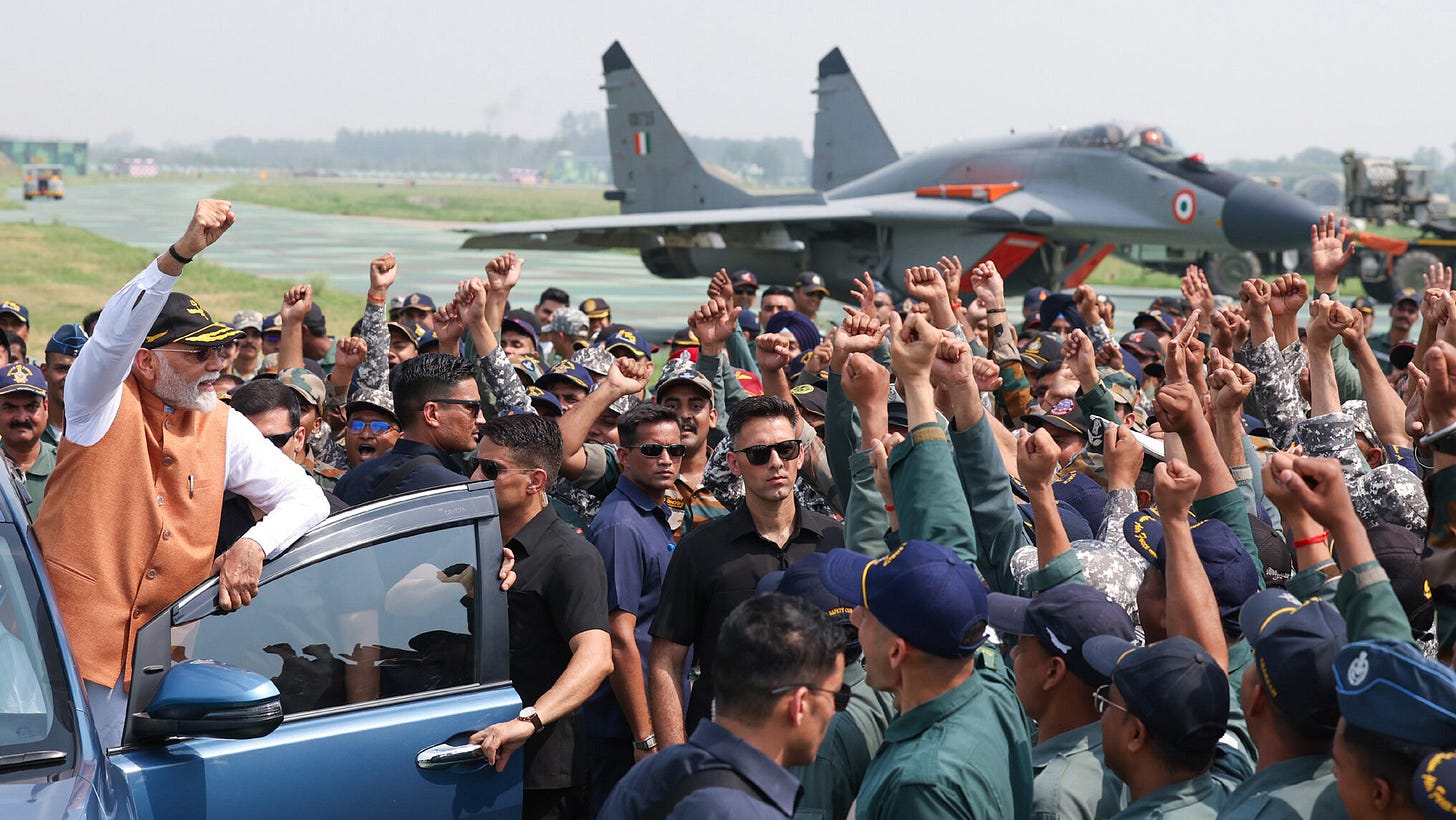The Fallout of the India-Pakistan Conflict for MENA
Western arms procurement ambitions have been put into question.
The 2025 India–Pakistan conflict, triggered by the 22 April Pahalgam attack in Jammu and Kashmir, has so far imposed limited but potentially escalating economic costs, while prompting notable shifts in regional defense and geopolitical alignments. India’s boycott of Türkiye and Azerbaijan, alongside the broader conflict, has reshaped strategic dynamics across the Middle East and North Africa. Responses from regional powers have been measured yet revealing—reflecting a delicate balance of economic interdependence, geopolitical calculation, and evolving security preferences. Notably, the conflict has highlighted the growing appeal of Chinese military technology and deepening frustration with the limitations of U.S. defense partnerships, raising the prospect of a gradual regional tilt towards China.
Economic Toll and Boycotts
The conflict’s economic impact has been stark—both for India and Pakistan, and for stakeholders across the Middle East. India’s daily military expenditure during the crisis reached approximately $16 billion, while Pakistan incurred nearly $4 billion per day, based on estimates from the Kargil War. In addition, bilateral trade between the two countries, valued at $2 billion annually, collapsed following the closure of the Wagah–Attari border, visa cancellations, and airspace restrictions.
India’s boycott of Türkiye and Azerbaijan, in response to their military support for Pakistan, has reverberated across the Middle East. Türkiye saw a $234 million trade loss, with Indian travel platforms reporting an 80% drop in bookings and a 250% surge in cancellations, severely impacting its tourism sector. Azerbaijan’s $69 billion tourism industry, where Indian visitors account for 9–11% of arrivals, experienced a 60% decline in bookings. These boycotts signal risks for other regional actors considering involvement, as economic repercussions could deter deeper engagement.
India’s Miscalculated Defense Pivot
India’s military response highlighted its strategic shift from Russian to Western weaponry, aimed at countering China and aligning with the U.S. Deploying French Rafale jets, U.S. Predator drones, and Israeli Harop drones, India moved away from its traditional reliance on Russian Su-30s and MiG-29s. However, battlefield outcomes exposed vulnerabilities. Pakistan’s Chinese-supplied J-10C jets downed six Indian aircraft, including Rafales, while its HQ-9B air defense systems intercepted India’s $5.4 billion Russian S-400 missiles. These setbacks have sparked debate over India’s $2.9 billion investment in Israeli arms and billions more in U.S. and French systems, suggesting its Western pivot may have been premature. Pakistan’s success with Chinese technology underscores its growing reliability, potentially prompting India to reassess its defense strategy and even soften its rivalry with China.
Regional Responses & Chinese Influence
Regional powers have responded cautiously, balancing economic interdependence with geopolitical calculations. Israel, a key supplier of India’s drones, endorsed India’s self-defense claims, risking tensions with Türkiye, which supplied Pakistan with Songar drones. Iran, prioritizing its oil exports amid U.S. sanctions, offered mediation to de-escalate the conflict. The Gulf Cooperation Council, reliant on India for $120 billion in trade and 60% of its oil exports, maintained neutrality, with Saudi Arabia, the UAE, and Qatar urging dialogue.
Pakistan’s success with Chinese weaponry has sparked interest in the GCC, particularly as frustrations grow with U.S. defense delays. Saudi Arabia’s 2024 drone procurement talks with China, bolstered by $200 billion in China-GCC trade and Belt and Road investments, signal a potential shift. Chinese arms, offering cost-effective alternatives, could dilute the GCC’s reliance on U.S.-led security frameworks, reshaping Middle Eastern defense markets.
Implications
The India–Pakistan conflict underscores the fragility of regional stability, with economic disruptions and India’s boycott threatening trade and tourism. India’s Western defense pivot faces scrutiny as Chinese weaponry proves effective, potentially prompting a strategic reassessment that could ease India–China tensions. For the Middle East, Pakistan’s battlefield success and growing Chinese influence challenge US dominance, as the GCC may be prompted to explore Chinese arms as viable alternatives. If these trends persist, the conflict could accelerate a broader realignment, with far-reaching implications for global security and economic ties.



